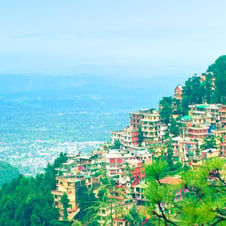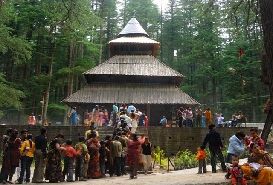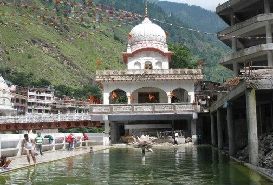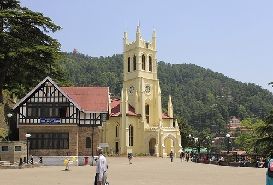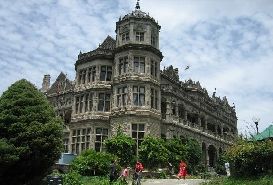Weaving in Himachal Pradesh has a long and intertwined history. It is just not only a climatic necessity. However, it is also an ancient tradition in the state. Central Asia and Tibet influence the techniques and designs, and its rich heritage makes it popular among tourists from all over the world. Shawls and woolen garments in Himachal Pradesh are handwoven and knitted at home. Factory-made items are also available in the state. However, they do not have the same value as handmade products. State emporia and garment shops are convenient places to buy these items. Don’t forget to check the trademark label for authenticity. To know more about the woolen garments of Himachal Pradesh, weaving, and the different variety of products, read on.
History
The most popular ‘Silk Road’ was the ancient trade route, formally known as the wool road. This ancient route connects the plains of Punjab in India with Tibet and Central China. It passes through several places, including Kullu and Kinnaur in Himachal Pradesh. This was the traditional main route where two types of artisans used to find here, including weavers of Kullu and Kinnaur. The weaving traditions in Himachal Pradesh have a history of almost 5,000 years old. The shawls of Himachal Pradesh are popular throughout the country due to their skillful weaving.
The art of weaving motifs on the woolen garments started in Kinnaur village named Shubnam and the craft of weaving came to the region from Tashkent, Uzbekistan, via China and Tibet. The weaving style of Kullu was first introduced in the 1830s when artists of Kinnaur visited the Kullu Valley. Earlier, the weaving style of Kullu was restricted to plaids, checks, and twill. There were no signs of motifs. Kinnauri artists shared their techniques with the people of Kullu, and then the weaving techniques of garments of Kullu evolved.
Explore: 5 Nights 6 Days Shimla Manali Tour Package
Raw Material and Weaving Technique
Wool is the raw material used for making shawls and woolen garments. It is regarded as pure in Himachal, and the garments made from wool are essential to wear during festivities. The main variety of fleece used to weave shawls in Himachal includes deshkar, which is a fleece from local and lowland sheep. The other type of fleece is bihang which is got sheared from the sheep of Kinnaur and other high altitude regions. There are several sheep breeding farms in the districts of Hamirpur, Chamba, Mandi, and Kinnaur and one can witness shearing firsthand. Other sources of wool are migratory Himalayan goats, Pashmina goats, and angora rabbits. During the summer season, these goats naturally shed their fleece. Earlier, the fleece from the endangered Tibetan antelope namely shahtoosh was also used, but it is now prohibited.
In recent times, the Kullu shawls produced for commercial purposes have a ground woven in chemical-dyed, mill-spun merino, while brightly colored acrylic yam is used to weave the border motifs. Pattus and dohrus are still often woven in deshkar and bihang fleece. Some dohrus are also woven from yak fleece. Wool is obtained from the underbelly of the sheep as it is finer than the outer body hair. Himachal Pradesh also imports wool from Australia. They also use chemical and vegetable dyes to color the wool in various hues.
The authentic handloom weaving technique is similar to those practiced by ancestral weavers. Pit and frame looms are still used and designs are embroidered by hand. Patterns on looms use techniques such as slit tapestry and interlacing (dovetailing).
Shawls:
The shawls of Himachal Pradesh are woven in Kinnaur, Kullu, Chamba, and Lahaul districts. To preserve their authenticity, the government patented Kullu and Kinnauri shawls. There are subtle differences between the shawls of these districts:
Kinnauri Shawls – There are three types of shawls, among which one is Chhanli, which is of 2 meters in length and 1 meter in width. It comprises motifs and shelved edges with a 2-inch border running the shawl length on both sides. Lengcha is another type of shawl, which is smaller in size with the composition of 1 meter in length and 1 meter in width. It is draped over the shoulder and fastened by brooch known as digra. The third type of shawl is dohrus, which has a plain or chequered base with a border of 15 – 20 cms known for its intricate patterns.
Kinnaur artisans are considered pioneers in shawl weaving. They are known for their artistic finesse. Their geometrical patterns have religious meaning and the colors of the thread used for embroidery represent the elements of nature – water (white), air (green), earth (yellow), ether (blue) and fire (red). Frame looms are mainly used to weave the shawls and the embroidery is done by hand. These shawls are generally woven in handspun wool from the local flat-tailed sheep or from yak tail—hair.
Kullu shawls – These shawls have got inspiration from Kinnauri-style shawls. The motivation comes from patterned chhanli, lengchas, and dohrus. The pattus is the outer garment in Kullu, which is available in a range of lengths from the 2.5-meter in length and 1.33 meters in width to 3 meters in length and 1.5 meters in width. Before the arrival of Kinnaur weavers, the pattus were woven in the pattern of squares and rectangles. These pattus are still worn by Kullu ladies daily. The number and type of notifs classify this garment. Traditional bridal pattus comprises white background and have highly decorated phools. The embroidery in Kullu Shawls is less intricate as compared to Kinnaur Shawls and a wider range of colors is used. The price of these shawls depends on the wool used. Pashmina shawls are more expensive than other wool shawls.
Browse through our: Shimla Tour Packages From Nagpur, Shimla Tour Packages From Delhi, Manali Tour Packages From Jaipur, Himachal Pradesh Tour Packages From Mumbai, Himachal Pradesh Tour Packages From Chandigarh, Dalhousie Tour Packages From Amritsar
Chamba shawls (Pattu) – Tissa and Pangi are two areas in Chamba where shawls are woven. They are woven during winter months when going outside is not possible due to heavy snow. Chamba Shawls are woven on handlooms in wool. Sometimes one thread is cotton and the other crossing thread is wool, which is a unique feature of Chamba Shawls. The shawls have a bright border in traditional design and such designs have distinct regional variations.
Lahaul shawls – The most colorful shawls are made in Lahaul Valley. They are designed with Buddhist influences.
Woolen Garments:
Since Himachal Pradesh experiences cold winters, woolen garments are essential for residents. They wear traditional winter garments such as dhoru, jurkhi, Himachali cap, jhaggi, pattu and loia. These have religious significance and are worn during weddings and special occasions.
Nowadays, the Himachali youth wear modern winter clothes. No wonder it has become a cottage industry in the state. The markets of cities and towns are filled with socks, gloves, mufflers, pullovers, ponchos, sweaters, warm shirts, suits, and other winter wear. These are the main features of the woolen garments of Himachal Pradesh:
- Tweeds, stripes, and checks are common designs woven on the fabric of shirts and suits.
- Chamba scarves have a unique do-rookha embroidery called Chamba rumal embroidery.
- Women wear traditional pattu attire with a beautiful red border known as kushti.
- Thapada is an elaborately embroidered shawl that is larger than the normal shawls.
- Himachali caps are known for their uniqueness and style.
- Footwear made in Lahaul are warm and can only be worn at home.
Checkout: Himachal Pradesh Tour Packages, Spiti Valley Tour Packages, Shimla Tour Packages, Palampur Tour Packages, Mcleodganj Tour Packages, Manali Tour Packages, Kufri Tour Packages, Khajjiar Tour Packages, Kalpa Tour Packages, Dharamshala Tour Packages, Chail Tour Packages




